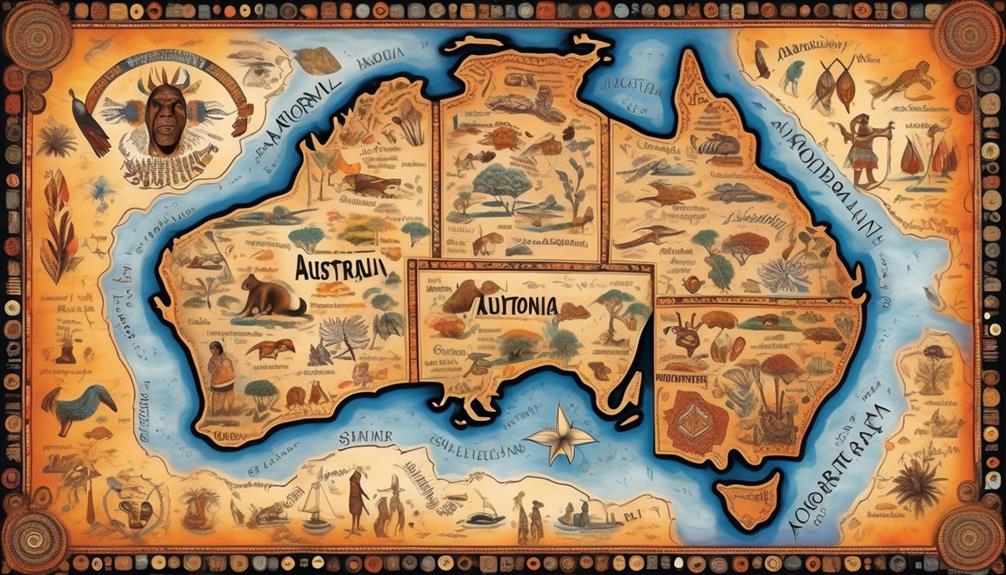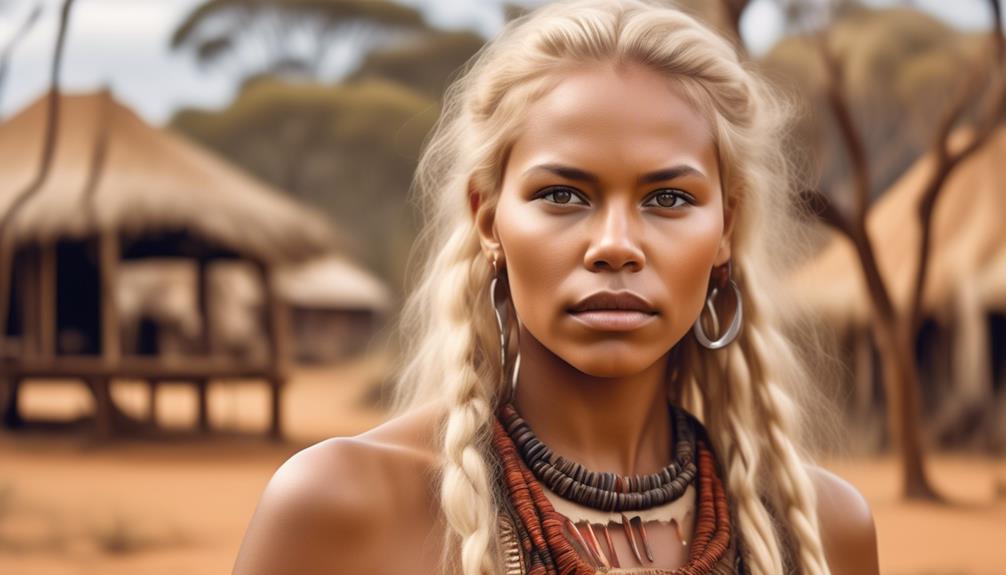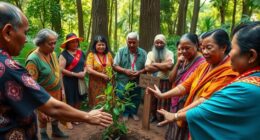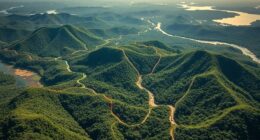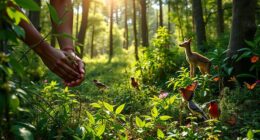Did you know that the Sami community is recognized as one of Europe’s indigenous groups, with around 80,000 individuals spread across Norway, Sweden, Finland, and Russia?
But what exactly makes a group indigenous? Are the Sami truly indigenous, and what are the implications of this classification?
Let's explore the complex and often debated topic of Sami indigeneity, shedding light on their historical background, cultural traditions, legal recognition, and contemporary identity.
Key Takeaways
- The Sami people are recognized as indigenous people of Europe and have a population of around 80,000 spread across Norway, Sweden, Finland, and Russia.
- The Sami people have a deep connection to the lands of Northern Europe and their nomadic lifestyle is influenced by their reliance on reindeer herding and changing seasons.
- The Sami language holds a central place in their cultural practices, with nine distinct Sami languages spoken across their homeland. Traditional clothing and crafts also reflect their connection to nature and environment.
- The Sami people face challenges in securing legal recognition and protection of their land rights, as well as preserving their cultural identity in the face of modernization and globalization. However, they engage in asserting their indigenous identity, advocating for their rights, and contributing to global conversations about sustainability and land stewardship.
Historical Background of the Sami People
The historical background of the Sami people reveals a rich and complex tapestry of traditions, migrations, and interactions with neighboring cultures. Sami history is characterized by a deep connection to the lands of Northern Europe, with evidence of Sami presence dating back thousands of years. The Sami are known for their nomadic lifestyle, which was influenced by their reliance on reindeer herding and their need to move with the changing seasons. This lifestyle led to distinct migration patterns as the Sami followed the natural cycles of their environment.
Over the centuries, the Sami people have encountered various external influences, including interactions with Viking settlers, Scandinavian kingdoms, and later, the borders drawn by nation-states. These encounters have shaped the historical trajectory of the Sami, influencing their cultural practices and societal structures. Additionally, the forced assimilation policies implemented by some governments have also impacted the Sami population and their traditional way of life.
Understanding the historical context of the Sami people is essential in recognizing the complexities of their identity and the challenges they've faced. By delving into Sami history and migration patterns, we gain insight into the resilience and adaptability of this indigenous group.
Cultural Practices and Traditions
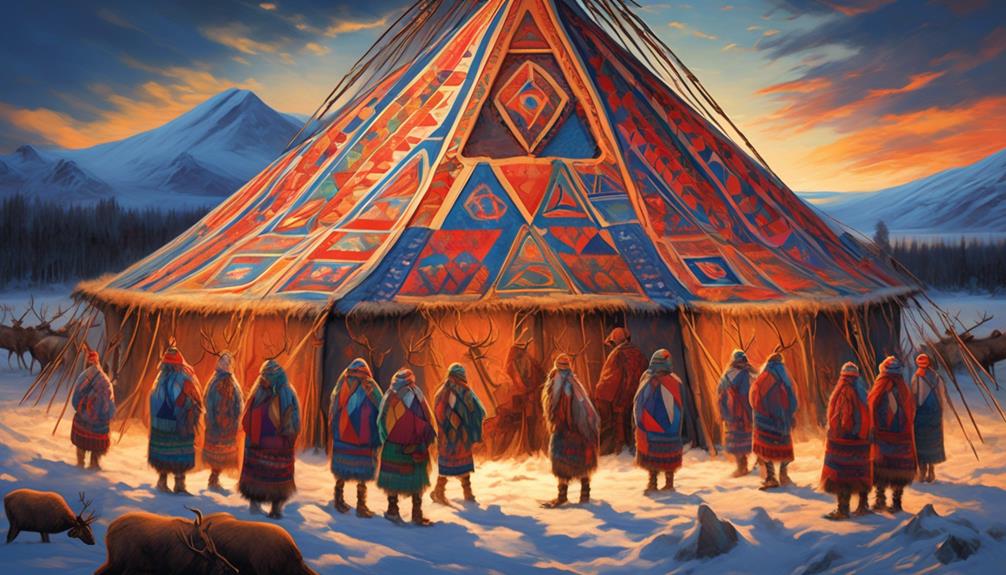
As we explore the cultural practices and traditions of the Sami people, we witness the enduring impact of their historical interactions and adaptations on shaping their way of life.
- Sami Language: The Sami language holds a central place in their cultural practices, with nine distinct Sami languages spoken across the Sami homeland. The preservation and revitalization of these languages are crucial to maintaining their unique cultural identity.
- Reindeer Herding: Reindeer herding is a cornerstone of Sami culture, providing not only sustenance but also shaping their way of life. The tradition of reindeer herding is deeply intertwined with Sami identity, spirituality, and economic sustainability.
- Traditional Clothing and Crafts: The art of crafting traditional Sami clothing and handicrafts, such as the intricately patterned duodji, reflects their deep connection to nature and the environment. These crafts aren't only practical but also carry significant cultural and symbolic meanings.
- Joik Music: Central to Sami cultural practices is the traditional form of song known as joik. Joiking is a unique form of musical expression that encapsulates personal, communal, and spiritual experiences, reflecting the Sami people's deep-rooted connection to the land and their surroundings.
Legal Recognition and Rights
To understand the legal recognition and rights of the Sami people, it's essential to delve into the complex historical and contemporary factors that have shaped their legal status and struggles for self-determination.
Legal recognition of the Sami as an indigenous people varies across the Nordic countries where they reside. In Norway, Sweden, Finland, and Russia, there have been significant developments in acknowledging the Sami as an indigenous group with specific rights.
Land rights have been a focal point in the struggle for recognition, as the traditional livelihoods of the Sami, such as reindeer herding, fishing, and hunting, are deeply connected to their land and natural resources. The legal recognition of these land rights is crucial for the preservation of Sami culture and traditional practices.
While progress has been made in recognizing these rights, challenges persist, including issues related to land ownership, resource exploitation, and the impact of climate change on traditional Sami territories. Efforts to secure legal recognition and protection of land rights for the Sami people continue to be a complex and evolving process, influenced by historical injustices and contemporary political dynamics.
Challenges to Indigenous Classification
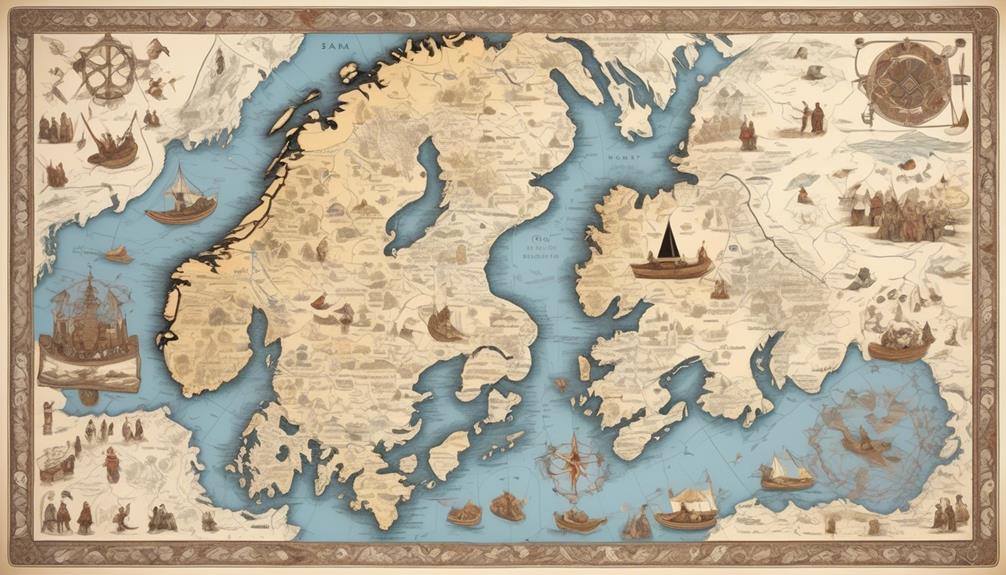
The classification of the Sami people as indigenous isn't without its challenges, as they navigate complex issues related to indigenous rights and cultural preservation. Some of the challenges they face include:
- Recognition: The Sami people often struggle to gain recognition as indigenous people, both within their respective countries and on an international level. This lack of recognition can hinder their ability to access rights and resources afforded to indigenous communities.
- Land Rights: Securing land rights is a significant challenge for the Sami people, as their traditional lands are often subject to competing interests, such as mining or forestry, which can threaten their cultural preservation and way of life.
- Political Representation: Limited political representation can impede the Sami people's ability to advocate for their rights and influence policies that affect their communities.
- Cultural Identity: The preservation of their unique language, traditions, and way of life in the face of modernization and globalization presents an ongoing challenge for the Sami people.
Addressing these challenges is essential for the Sami people to fully enjoy their indigenous rights and preserve their cultural heritage.
Contemporary Sami Identity and Activism
Navigating the challenges of recognition, land rights, political representation, and cultural identity, the contemporary Sami people have actively engaged in asserting their indigenous identity and advocating for their rights through various forms of activism. In contemporary times, Sami activism encompasses a wide range of efforts including identity politics and environmental advocacy. Through identity politics, the Sami people are challenging the dominant narratives that have historically marginalized their cultural heritage and traditional lifestyle. This form of activism involves reclaiming their cultural identity and challenging the imposed classifications that have impacted their status as an indigenous community. Simultaneously, environmental advocacy has become a crucial aspect of Sami activism, as they strive to protect their ancestral lands and preserve the delicate ecosystems upon which their traditional livelihoods depend. By engaging in environmental advocacy, the Sami people are not only defending their own rights, but also contributing to broader global conversations about sustainability and indigenous land stewardship.
| Types of Activism | Description | Example |
|---|---|---|
| Identity Politics | Challenging dominant narratives | Cultural revitalization |
| Environmental Advocacy | Protecting ancestral lands | Opposition to mining |
Frequently Asked Questions
What Is the Economic Status of the Sami People Today?
The economic status of the Sami people today presents significant challenges, including limited access to traditional lands and resources, resulting in financial instability.
However, efforts to preserve their cultural heritage through tourism, arts, and crafts provide some economic opportunities.
Despite these efforts, the Sami still face economic disparities compared to non-indigenous populations.
It's important to support initiatives that empower the Sami economically while respecting and preserving their unique cultural identity.
How Do Sami People View the Impact of Climate Change on Their Traditional Way of Life?
Facing climate change, the Sami people in Sweden are witnessing the decline of their reindeer herds due to changing grazing patterns. Their traditional knowledge is crucial, but they're also embracing environmental activism to protect their way of life.
Climate change threatens their ancestral practices, highlighting the urgency of preserving their culture and environment. This intersection of tradition and modern challenges underscores the complex impact of climate change on the Sami people.
Are There Any Specific Health Issues or Disparities Affecting the Sami Community?
Health disparities within the Sami community are a complex issue that impact cultural preservation. Factors such as limited access to healthcare, language barriers, and discrimination contribute to these disparities.
Additionally, there are unique health challenges related to traditional Sami livelihoods and lifestyle.
Addressing these disparities requires culturally sensitive healthcare services and policies that respect and support Sami traditions and ways of life.
What Are Some Examples of Modern Day Discrimination or Prejudice Experienced by the Sami People?
In modern times, the Sami people continue to face discrimination and prejudice, impacting their cultural preservation, environmental impact, and land rights.
This discrimination often manifests in the form of limited access to traditional lands, unequal resource allocation, and challenges in preserving their language and customs. Additionally, negative stereotypes and misconceptions about their way of life contribute to ongoing prejudice.
These issues highlight the importance of addressing and advocating for the rights of the Sami community.
How Does the Sami Community Engage With Other Indigenous Groups Around the World?
Engaging with other indigenous groups, the Sami community fosters collaboration, sharing traditional knowledge and experiences. They celebrate similarities in struggles and triumphs, forming alliances to advocate for indigenous rights globally.
This collaborative approach reflects the deep respect for Sami culture and the recognition of commonalities with other indigenous communities. By uniting, they amplify their voices and create a stronger platform for preserving traditions, protecting lands, and addressing shared challenges.
Conclusion
In conclusion, the question of whether the Sami people are indigenous is complex and multifaceted. While they have a long history and unique cultural practices, they have faced challenges in gaining legal recognition and rights as an indigenous group.
Their contemporary identity and activism continue to shape the conversation around indigenous classification. For example, the case of the Sami Parliament in Norway advocating for the rights of reindeer herders highlights the ongoing struggle for recognition and inclusion.




